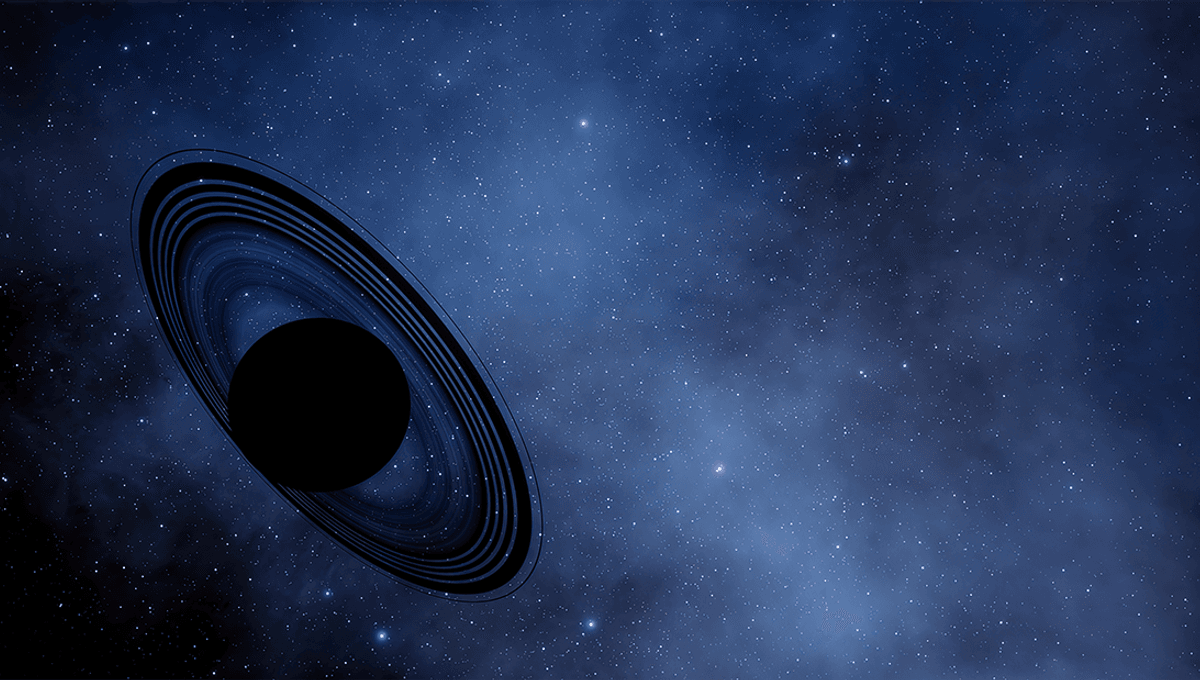
A new paper from Harvard’s sometimes controversial physicist Avi Loeb has suggested that if we want to find advanced alien life, “black hole moons” may be the object to search for.
Finding advanced alien life out there in the cosmos would be one of the most profound discoveries of humanity’s existence. But as much as we have explored the skies with ever-more-powerful telescopes, we have failed to find evidence of any technological species.
One problem with the search is that we don’t know exactly what to look for. While we know what signatures our own species produce, advanced aliens may have alternative ways of producing the kind of power they require. Going by the Kardashev scale, that may be quite a lot.
Scientists, with a little help from sci-fi writers, have attempted to dream up possible power sources for advanced civilizations, given what may be possible according to our current understanding of physics. For a time, Dyson spheres were a popular idea. These are hypothetical megastructures placed around a star to harvest most of its energy, before directing it where it is needed.
While these sound cool as hell, they may come at a great cost for any civilization that wants to make one. Besides that, looking out into the cosmos, we have not yet found any signs of such a megastructure, suggesting there are no hyper-advanced civilizations out there, or that Dyson spheres are something that advanced civilizations deem unnecessary or not practical (or, of course, that we haven’t looked hard enough yet).
But there are alternative power sources that we could look into. One idea, first proposed by respected physicist and mathematician Roger Penrose, is that we could extract energy from rotating black holes, also known as Kerr black holes, after Roy Kerr, who described their geometry.
In 1969, Penrose suggested that energy could be extracted from black holes by lowering an object into the ergosphere (the region just outside of the event horizon) and allowing it to accelerate the object, stealing some of the black hole’s energy. The idea, known as the Penrose process, requires negative energy to be acquired by the object in order for it to be recovered from the black hole – otherwise, all you’d be doing is feeding the black hole.
“Let’s imagine that we launch a particle from very far away into the ergosphere of a Kerr black hole, following a retrograde orbit, that is, a trajectory directed against the black hole’s rotational direction,” Jorge Pinochet, professor in the physics department of the Universidad Metropolitana de Ciencias de la Educación, explains of the process in a recent paper. “Suppose we calculate the trajectory so that upon entering the ergosphere, the particle fragments into two pieces, one of which is absorbed by the black hole, and the other escapes outward, moving an arbitrarily large distance away.”
“Due to the extreme intensity of gravity inside a black hole, general relativity allows the absorbed fragment to have negative energy.”
Under these circumstances, Penrose showed that the escaping fragment would have more energy than the fragment absorbed by the black hole. That may sound like conservation of energy laws are being broken, but according to what we know of general relativity, that is not the case.
“The trick to obtain this result is that the black hole absorbs negative energy, which leads to a reduction in its mass-energy, which translates into a decrease in its rotational speed,” Pinochet continues. “In other words, we have extracted rotational energy from the black hole.”
Getting to a black hole, depending on where your star is located, could be pretty tricky without the energy you can get from a black hole. But in the new paper, Loeb proposes that an advanced species could choose to create their own small black hole, and have it orbit their planet as a moon.
“Advanced civilizations could satisfy their energy needs by processing matter through an accretion disk around a mini black hole that orbits their planet like a moon,” Loeb writes in the paper, adding that the civilization could survive like this on a planet without a sun.
According to Loeb, this could be in the form of a black hole created by aliens, or a captured primordial black hole.
In the work, he attempted to find the optimal-sized black hole moon for aliens living on a rocky, Earth-like planet, finding that it could be feasible to have a fairly small black hole, fed a moderate amount of mass to prevent evaporation.
“Hawking radiation from a mini black hole with a mass of ∼1011 g in a low orbit around an otherwise frozen rogue planet, can supply the energy needs of a civilization on the surface of the planet,” he writes. “Maintaining this furnace for more than a few years requires a modest accretion rate of ∼2 kg s−1.”
Rogue planets have been found roaming the cosmos in recent years, and Loeb suggests that specific signatures from rogue planets could be a sign of life.
“If we ever detect a rogue rocky planet which is illuminated by a gamma-ray moon with no stellar-mass companion, we would need to consider the possibility that the source was created (or trapped as a primordial black hole) by a highly advanced technological civilization,” Loeb writes. “There is no better marker of technological innovation than creating a furnace out of spacetime curvature in the form of a mini black hole.”
While certainly a fun idea, at present we don’t even know that primordial black holes exist, making the idea of capturing one to heat your rogue planet very much in the realm of speculation. We may find more rogue planets with interesting signatures, but for now, maybe don’t hold your breath.
The study is published in Research Notes of the AAS.
Source Link: Black Hole Moon: Rogue Planets With Weird Signatures Could Be A Sign Of Advanced Alien Life